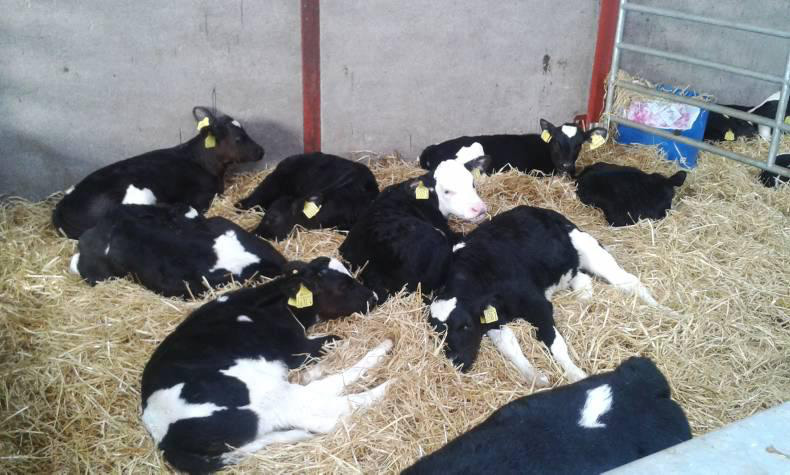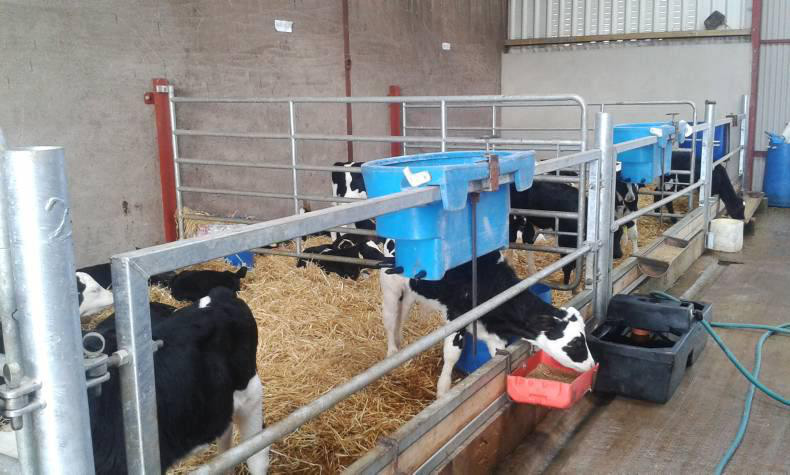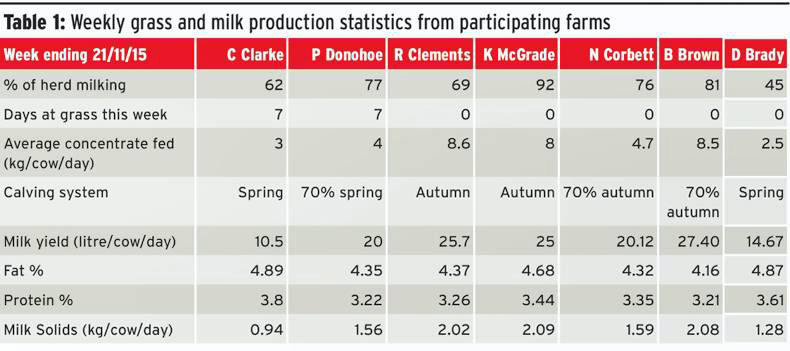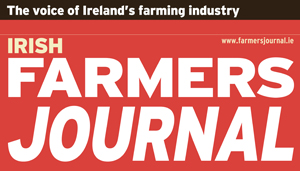Dairylink: Autumn calving is in full swing across Northern Ireland
28th November 2015
Dairylink adviser Conail Keown develops calf-rearing targets for autumn-calving herds
Last week's article featuring calf-rearing on one of the Dairylink Ireland project farms in Tyrone generated significant interest, particularly around the areas of colostrum management and calf weaning targets.
Feeding cost in relation to powder milk cost versus whole milk also generated discussion, so we are revisiting the issue this week.
Calving on four of the project farms is progressing steadily. With the subsequent number of calves increasing on these farms, pressure is increasing on the facilities and labour required for calf-rearing.
A robust plan is needed to outline the rearing policy on all farms. Such a policy should include protocols for colostrum management, a feed plan for all calves to include powder mixing rates, hygiene standards including feeding equipment cleaning frequency, and finally a labour rota to ensure this work is carried out on a daily basis.
Some key questions and topics surrounding calf management that have arisen on Dairylink Ireland project farms are discussed below.
How much colostrum should a calf receive?
A newborn calf has no active immunity and is highly vulnerable to infection. Consequently, it is completely reliant on a quality source of colostrum to protect against the challenge of disease.
A newborn calf must consume approximately 10% of its body weight (over four litres, depending on the calf’s birthweight) of colostrum within the first six hours after birth.
Timing is critical at this stage, as the ability of the calf to absorb antibodies decreases rapidly after birth.
Last week's article highlighted the importance Kevin McGrade places on this by administering colostrum to newborn calves within 15 minutes of their birth using a stomach tube.
To ensure newborn calves receive sufficient colostrum within the first six hours, it is useful to maintain a supply of frozen colostrum to use if none is freshly available to feed to newborn calves.
Is the quality of the colostrum important?
The percentage of antibodies in colostrum decreases rapidly with each milking. The second milking usually only contains 60% to 70% of the antibodies available in the first milk. Consequently, it is best if calves receive the first milk produced from the cow after calving.
The number of pregnancies that the cow has had also affects the quality of colostrum. Older cows have been exposed to a greater number of infections than first-calved heifers and so have higher concentrations of antibodies in their colostrum.
It is also important to note that the quality of colostrum is reduced by the presence of dirt or other debris leading to contamination, and therefore the cow’s udder and teats should always be cleaned before the first feeding.
At what stage should calves be weaned?
Rumen development is the key indicator farmers should use when deciding when to wean calves off milk.
Correct nutritional management of the calf in the first six to eight weeks will help improve rumen development in those early days. Getting quantities of milk or milk replacer correct is important.
However, to promote good rumen development, small amounts of high-quality calf starter should be offered from four days old. This will ensure that the starter is kept fresh and will also encourage intake.
As discussed last week, Kevin McGrade will wean calves when they are consuming 1.5kg of concentrate, which contributes to an ability to calve replacements at 25 months.
Clean water should also be offered from day four onwards, as this encourages starter intake and is needed to support the developing bacterial population in the rumen.
In most cases, calves can be weaned at six to eight weeks if starter consumption is adequate.
A longer period before weaning may be required for some calves that developed scour or pneumonia that resulted in a decreased appetite, those that were fed poor-quality starter or those that did not have fresh water available.
Through careful management, early weaning can be successful and will help to reduce the cost of rearing replacements.




This article has been reproduced with the kind permission of the Irish Farmers Journal. Please click on the below Irish Farmers Journal logo to be brought to additional dairy articles
